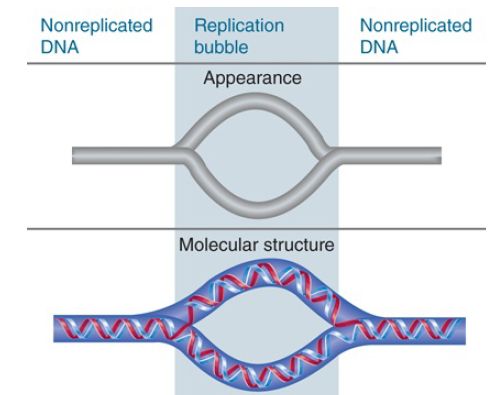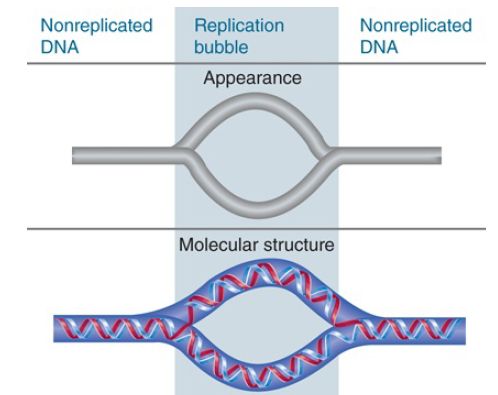
An Origin Usually Initiates Bidirectional Replication
 المؤلف:
JOCELYN E. KREBS, ELLIOTT S. GOLDSTEIN and STEPHEN T. KILPATRICK
المؤلف:
JOCELYN E. KREBS, ELLIOTT S. GOLDSTEIN and STEPHEN T. KILPATRICK
 المصدر:
LEWIN’S GENES XII
المصدر:
LEWIN’S GENES XII
 الجزء والصفحة:
الجزء والصفحة:
 1-4-2021
1-4-2021
 2569
2569
An Origin Usually Initiates Bidirectional Replication
KEY CONCEPTS
- A replicated region appears as a bubble within nonreplicated DNA.
- A replication fork is initiated at the origin and then moves sequentially along DNA.
- Replication is unidirectional when a single replication fork is created at an origin.
- Replication is bidirectional when an origin creates two replication forks that move in opposite directions.
Replication begins at an origin by separating or melting the two strands of the DNA duplex. FIGURE .1 shows that each of the parental strands then acts as a template to synthesize a complementary daughter strand. This model of replication, in which a parental duplex gives rise to two daughter duplexes, each containing one original parental strand and one new strand, is called semiconservative replication.

FIGURE .1 An origin is a sequence of DNA at which replication is initiated by separating the parental strands and initiating synthesis of new DNA strands. Each new strand is complementary to the parental strand that acts as the template for its synthesis.
A molecule of DNA engaged in replication has two types of regions. FIGURE .2 shows that when replicating DNA is viewed by electron microscopy, the replicated region appears as a replication bubble within the nonreplicated DNA. The nonreplicated region consists of the parental duplex; this opens into the replicated region where the two daughter duplexes have formed.

FIGURE .2 Replicated DNA is seen as a replication bubble flanked by nonreplicated DNA.
The point at which replication occurs is called the replication fork (also known as the growing point). A replication fork moves sequentially along the DNA from its starting point at the origin. The origin can be used to start either unidirectional replication or bidirectional replication. The type of event is determined by whether one or two replication forks set out from the origin. In unidirectional replication, one replication fork leaves the origin and proceeds along the DNA. In bidirectional replication, two replication forks are formed; they each proceed away from the origin in opposite directions.
The appearance of a replication bubble does not distinguish between unidirectional and bidirectional replication. As depicted in FIGURE .3, the bubble can represent either of two structures. If generated by unidirectional replication, the bubble represents one fixed origin and one moving replication fork. If generated by bidirectional replication, the bubble represents a pair of replication forks. In either case, the progress of replication expands the bubble until ultimately it encompasses the whole replicon. When a replicon is circular, the presence of a bubble forms the θ (theta) structure shown in FIGURE .4.

FIGURE .3 Replicons can be unidirectional or bidirectional, depending on whether one or two replication forks are formed at the origin.

FIGURE .4 A replication bubble forms a θ structure in circular DNA.
 الاكثر قراءة في مواضيع عامة في الاحياء الجزيئي
الاكثر قراءة في مواضيع عامة في الاحياء الجزيئي
 اخر الاخبار
اخر الاخبار
اخبار العتبة العباسية المقدسة


